





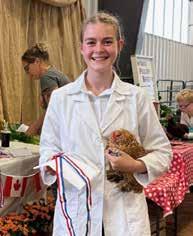








































































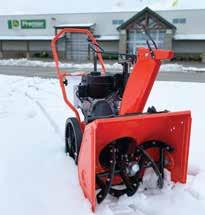













































































































Company started by Daryl Haanstra in 2006 receives West Lincoln chamber award
By Luke Edwards
When he started what would become one of West Lincoln’s most prominent farming operations, Daryl Haanstra had little more than his 1998 John Deere 6620 Titan II combine and a strong work ethic.
Not long after he’d add a sprayer to his inventory, as he looked to grow his fledgling agricultural services business. But then disaster would strike, forcing him to lean on that work ethic.
“The first year I had my sprayer, I had a $13,000 breakdown in the first month,” said Haanstra, owner of Twenty View Farms.
“And I thought, how am I going to get through this?”
The answer was simple: one job at a time.
“So when the phone rang, I said ‘yes,’” he said.
That hard work eventually paid off. Now Haanstra employs more than a dozen people, providing



crop support for farmers in Niagara, Haldimand and Wentworth. The business helps with crop planning, planting, crop care and harvesting.
They also have a licensed grain elevator on the Twenty Road prop-

erty, are a Pioneer Seed dealership and sell crop protection products and fertilizer to local farmers.


Publisher
Stewart Grant • stew@granthaven.com
Editor
Luke Edwards • luke@granthaven.com
Business Development
Heather Dunbar • heather@granthaven.com
Graphic Design
Erin Parsons • niagarafarmsnewspaper@gmail.com
Billing Administrator
Jen Gaetan • jen@granthaven.com
Contributor
Ann Marie Chechalk


Restoring small-town journalism, one community at a time!
They also now have municipal recognition, having won this year’s agri-related business award from the West Lincoln Chamber of Commerce. The win was humbling for Haanstra, who said he’s not one to seek publicity.
“I don’t wake up in the morning looking to get recognized,” he said. “I think our focus has always been on our customers.”
However, Haanstra did say the recognition is a great way to remind the greater public of the importance of agriculture in West Lincoln and Niagara in general.
“I think it’s critical that agriculture stays in the spotlight in Niagara. It’s a prime sector. It’s the foundation of Niagara,” he said.
Putting the sector in the spotlight can help overcome some of the misconceptions out there. Haanstra said the general public needs to understand that farming isn’t a 9-5, Monday to Friday type job. He said farmers are also stewards of the land, working to provide Canadians and the world with high quality food.
“We care about the land, because it’s our bread and butter,” he said.
Much of Twenty View’s clientele are conventional farm operations like cash croppers and dairy farmers. However, he said there are some more niche operations opening up in the region that Twenty View works with, along with some tender fruit growers.
Haanstra grew up on a dairy farm before going to study at the
University of Guelph’s Ridgetown campus. He then worked in retail for a few years before striking out on his own with the custom harvesting business, which combined his love of serving people with his love of driving tractors.
“I love agriculture, I love equipment, I love operating equipment. Even as a kid, I loved driving tractors and doing all that kind of stuff,” he said.
As the business grew, though, so did the kinds of skills Haanstra needed. No longer could he just be the kid on the John Deere. With employees working for him, Haanstra said he read books and studied leadership techniques. Developing those skills has paid off in spades, he said, as he relies on a strong and dedicated team that makes his life easier.
Like many farmers, Haanstra’s favourite part of his job is still harvest season and the satisfying feeling of getting the crop off. After months of preparation, planning and care, the harvest is the culmination of it all.
Twenty View wasn’t the only ag-related business honoured by the chamber. Green Sums Ltd. won the agricultural excellence award for their work growing high quality, sustainable soybeans and soft red wheat, while the Niagara 4-H Club received the non-profit community impact award.
Turkstra Lumber also won the community impact award for that company’s community support, including the summer barbecue fundraisers.
By Luke Edwards
Keeping pace with the frenetic growth of new technology is hard enough on its own, but when paired with confusing agreements that are longer than Tolstoy’s War and Peace and using complicated legalese, it can make any business owner’s head spin.
And farmers are no exception. Experts at the Canadian Greenhouse Conference held in Niagara Falls last month urged greenhouse operators to be careful when signing up with new technology providers and outlined some of the challenges the sector will be facing in the coming years as AI and big data becomes all consuming.
“It’s extremely important that farmers demand it,” said Rozita Dara, from the University of Guelph.
Dara covered governance issues when it comes to data. While she said many farmers cite privacy concerns with technology, in reality she said it comes down to the ownership, access and benefits of said data.
“Many of them feel they lose control of their data,” she said.
But that doesn’t mean growers should throw their hands in the air and give up on using technology. Instead, she said it’s about putting the right regulations in place and signing up with the right providers.
Agriculture and Agri-Food Canada’s Quade Digweed agreed, highlighting two priorities growers should consider. They both consider the longer term, looking at ownership of the data and what happens when the technology begins to age out.
“As long as you can take your data with you when you leave,” he said, adding end-of-support plans are also key.
Digweed said the lines between hardware and software are also being blurred, with a move towards monthly subscription models that include both the hardware and software. This trend has a mix of good and bad for farmers, he said. On the bright side, it often makes updates easier and can blunt the challenge of big up-front capital costs. However, it can also make the farmer feel like they’re stuck.
“This could look like ransom,” he said.
Dara plugged the AI4Food project she’s a part of at the university, which promotes the

adoption of technology to support Canada’s food system while also supporting good governance.
She did say there are companies taking governance and cyber security seriously, especially some of the smaller businesses.
“Start ups, they are listening,” she said.
Larger companies may be tougher to influence, but with a combination of farmers’ demands and government regulations, she seemed optimistic that strong governance
practices could be established in the agriculture technology sector.
On the robotics side of technology, Digweed sees potential in computer visioning systems as well as scouting robots. However, tasks that require touch remain a challenge as developers continue to struggle finding ways to have robots replicate the gentle touch of a human hand.
“Advances in computer vision, I see a lot of potential,” he said.
By Niagara Farms Staff
Reducing and removing some labelling requirements and changing how fruit and vegetable grading standards are managed are some of changes the Canadian Food Inspection Agency has made in an effort to support Canadian farmers.
The agency announced the measures in a news release last month. These changes are part of a commitment CFIA made through its Progress Report on Red Tape Reduction.
“This package of regulatory changes is about building a regulatory environment that reflects and responds to the realities of today’s agriculture sector,” said federal Minister of Agriculture and Agri-Food Heath MacDonald in the release. “By removing outdated rules and giving producers the flexibility they need to innovate
and grow, we’re helping ensure the long-term success of Canadian farms, food businesses, and the rural communities they support.”
CFIA described the seven changes in three categories. The first is an effort to remove “overly prescriptive requirements” and include removing prescriptive labelling requirements for fresh fruits and vegetables, reducing traceability labelling requirements for hatching eggs and chicks to align with current industry practices, and removing mandatory grading requirements for all produce intended for further processing, manufacturing or preserving.
The second category of changes are aimed at increasing flexibility and working faster. Under this bucket, the CFIA has updated “import requirements to give veal producers more flexibility to optimize the value of their products.” A second change is to have the Fruit
and Vegetable Dispute Resolution Corporation manage some fresh fruit and vegetable grade standards. This will help standards get changed more quickly to meet the needs of the industry.
Finally, the CFIA said it’s making it easier to update animal import rules to align with international standards.
The final category is described as “leveling the playing field” and requires salmonella enteritidis testing when importing hatching eggs from the U.S. to a licensed Canadian hatchery. The change is meant to match domestic requirements.
“These regulatory changes protect Canada’s reputation for the quality and safety of our agrifood sector while clearing the way for innovation and flexibility. This is how we ensure the prosperity of the Canadian economy,” said Minister of Health Marjorie Michel.
By Luke Edwards
An event that celebrates the farmers who put food on the table also raised money to support an organization that helps put food on the table of the community’s most vulnerable people.
West Lincoln, the host municipality for the 2025 International Plowing Match, handed over a cheque last month to West Lincoln Community Care for just over $4,200. The money was mostly raised in tent city, where the township had a booth, with staff volunteering to hand out specially designed T-shirts for anyone who made a donation.
“I’m so proud of that fact that it was a huge team effort,” said Mayor Cheryl Ganann, as the township held a small event to recognize the volunteers.
The T-shirts included a retro rooster and tractor, in recognition of West Lincoln’s agriculture, and specifically poultry, heritage.
Cynthia Summers, the township’s new director of community and protective services, said the results blew away her expectations. It hardly took any time after the volunteer signup sheet was posted before they had all the time slots filled, she said. Around 800 T-shirts were handed out during the IPM.
“I was blown away at the camaraderie,” she said, adding West Lincoln Community Care does great work in the community.
“I’m so impressed with what they do,” she said, adding it’s extra special for her because she comes from a background in social services helping the most vulnerable people of her community.

The township gave just over $4,200 and 131 pounds of food to West Lincoln Community Care last month. It was collected at the International Plowing Match. From left: Food bank manager Sharlene Volpatti, client services administrator Steph Melo and mayor Cheryl Ganann. ~ Luke Edwards photo
The township also collected about 131 pounds of food for community care, both at the IPM and the special line dancing events they hosted during the festival.
Sharlene Volpatti, WLCC food bank manager, said her organization was grateful for the donation, especially as the need for food banks grows.








“It is not uncommon for individuals to spend 70 per cent of their income on rent, leaving very little for food and necessities. Working together with other organizations enhances our reach and allows us to help the vulnerable in our community. We are very grateful to the Township for donating to our organization,” she said, thanking the staff for their hard work at IPM.












By Luke Edwards
Iris Meck has long believed in the value of continual learning, and now that a conference she started is more than a decade old, she has the evidence to prove it.
Meck’s Advancing Women Conference will be returning to Niagara this month, focusing on providing knowledge and support to women in agriculture. Among the speakers and presenters at the three-day conference will be several who years ago arrived as small startups unsure where their agri-business ideas could take them.
“Now they’re on the shelves of major grocery stores,” Meck said.
The conference runs from Sunday, Nov. 23 to Tuesday, Nov. 25 at the Sheraton Fallsview in Niagara Falls.
Meck has spent her entire career in the agricultural industry. She studied agriculture at the University of Manitoba, receiving a bachelor of science in agriculture and management degree, before working at Cargill for 11 years. After spending time at a couple of major PR marketing firms she ended up in Calgary and started

her own communications business focusing on agriculture in 1999.

A key part of her job was working on conferences for clients.
“I decided in 2014 I would do my own conference and do it for women in agriculture,” she said.
Her goal was two-fold. First, she wanted to “recognize the great work that women do.” And second, she wanted to provide a space where women in agriculture can learn tools and skills that will help them in their day-to-day lives.
“It’s a powerful network of women who understand the realities of agriculture and food production,” she said, adding many of the participants are ideal role models with great stories to tell.
The conference features dozens of workshops, several presentations and an exhibitor room of 35 entrepreneurs from across the country. There is also a full afternoon planned where the focus will be on mental health, with National Farmer Mental Health Alliance CEO Lauren Van Ewyk leading the session.
Meck has also invited two presenters from Ghana to share their insights on how women are helping shape the future of agriculture in that country.
Beyond the speakers and presentations, Meck said simply getting women together and sharing their experiences or asking questions provides value in itself.
“The speakers are a huge part of the conference but it’s the time after, during the coffee break, or during the question and answer
period and the workshops where they can have full interaction,” she said.
There are also a few other activities, including a screening of We Lend a Hand, a documentary on the Farmerette program that helped feed the Allied forces during the Second World War, as well as a cider, wine and beer tour as part of the conference’s new partnership with Cider Canada.
“I’m just looking forward to a really great mix with students, farmers, entrepreneurs, grower representatives and senior business leaders. There’s always something to learn and great stories to be heard,” Meck said.
Over her career in agriculture, Meck said she’s seen huge growth among women, from her early days when women made up a small but strong percentage of the sector to today, when postsecondary agriculture programs are full of women and many research stations have women up and down the organizational chart.
“I never wanted to say there was a glass ceiling, I don’t think there’s a ladder you have to climb. I think it’s an elevator and it’s going quicker and higher than it has ever before,” she said.
Registration is open right up to the conference, with flexible options for those who may only be able to attend a portion of the event. For more information or to register visit advancingwomenconference.ca.
By Luke Edwards
Despite increasing tipping fees, landfilling greenhouse waste continues to be the most economical solution for many Ontario greenhouse growers.
That’s even if much of the cost comes from moisture within the waste plant material.
“You’re paying a lot of money to dump water,” said the University of Guelph’s Dave Lubitz, during the Canadian Greenhouse Conference held last month in Niagara Falls.
Lubitz was referring to the high moisture content found in the vines and waste produced during greenhouse vegetable production, which makes landfilling the waste a costly proposition. Researchers and experts are continuing to work on solutions that will make alternatives to landfills more viable. Those solutions are going to become more vital as the province runs out of landfill space and tipping fees increase. Getting new landfill space approved in Ontario is a tall order.
Alternatives require the ability to scale up to meet the needs of a large greenhouse sector. And many show promise.
“Anything we’re going to do with it is going to be large scale,” Lubitz said.
Several different approaches have been tried, with everything from burning the waste to produce energy, or letting insects like black soldier flies devour it.
“It’s probably going to take a whole suite of (solutions),” said Lubitz.
Operators face a few main challenges when it comes to waste disposal. For one, the waste production isn’t steady. Pruning produces some waste throughout the growing season, but the bulk of it comes when the vegetables are harvested and the greenhouses cleaned out. That means a huge amount of waste is produced in a short time frame.
At the same time, the waste produced in those cleanouts comes with clips, strings and other items the growers used to support the plants as they grew.
Most of those clips are made from plastic or other inorganic materials, meaning waste solutions need to take that into account.
Farmers could try to use biodegradable, organic clips, but it’s a tough balance to achieve creating a clip that will survive during the growing season but then quickly breakdown after harvest.
The third main challenge Lubitz and others identified is the high moisture content found in the old vines. It makes many solutions, like incineration or anaerobic digestion inefficient. But at the same time lowering the water content in the waste is an expensive task.
Alexandra Grygorczyk went over some of the work on the matter being performed by the team at Vineland Research and Innova tion Centre. Some of her examples focused on the waste created beyond the old vines. For instance, creating stonewool powder from old substrate can be applied to the land. It offers only fairly low nutrient content but does have excellent water holding capacity, which Grygorczyk said could be useful to improve drought tolerance in some soils.
can still be used for other products. Greenhouse cucumbers, for instance, have scored high in their ability to produce a quality juice.
“You may as well try to recover those costs,” she said.
Second Harvest could also help. It’s a food rescue organization that provides logistics support to reduce food waste, and Grygorczyk said they’re looking to partnering more with greenhouse growers to use their produce to support Canada’s good system.
However, even as the monetary costs of alternative solutions come down, growers will be faced with other pressures.
“All of these things, compared to the landfill, is going to mean more management and more oversight,” Lubitz said.

























She also said growers can think twice before throwing grade outs into the discard bin, which renders them not food safe. Instead, vegetables that don’t make the grade due to colour or other imperfections,
By Luke Edwards
Not everyone loves surprises.
While an unexpectedly strong crop would seem like good news for any farmer, oftentimes that’s not the case as late scrambling for buyers can mean growers may be forced to take a lower price on the market. However, a Dutch company is utilizing artificial intelligence technology in an effort to allow greenhouse growers to see further into the future with more accuracy so they can be better prepared when a crop is better - or worse - than expected.
“How can we extract the maximum potential,” said Rien Kamman, CEO and co-founder of Source.ag, a Dutch company that has built software that Kamman says can more accurately predict greenhouse crop yields out to eight weeks.
Kamman spoke at last month’s Canadian Greenhouse Conference, held over two days at the Niagara Falls Convention Centre.
Previously, Kamman said the eye test was often good enough for predicting things out a couple of weeks in advance. However, in many cases that’s not enough time to negotiate sales. That’s where the eight-week goal comes in. Kamman said most growers he’s talked to say eight weeks of lead time will give them enough of a runway to maximize sales.
The software feeds data into the AI system and runs thousands of simulations of how things will proceed. Each day growers receive an update that offers a rolling forecast.
“It starts with high-quality data collection,” Kamman said.
He pointed to studies that have shown 95 per cent accuracy with truss tomatoes using Source.ag’s software, an improvement over the 90 per cent accuracy achieved through other means. However, Kamman said the real benefit isn’t in the overall accuracy.

“What’s really exciting is reducing the outliers,” he said, explaining the outlier crops are where the biggest cost discrepancies appear.
“It reduces volatility tremendously.”
The company also offers AI-based irrigation control software, and the forecast tools can also help growers make adjustments mid-season based on conditions.
“In the end, I believe AI is a tool to be wielded by experts,” he said, and in this case, the greenhouse growers are the experts.
The company has a North America headquarters, and their technology is currently being utilized in 300 greenhouses worldwide.
One of the challenges early on was getting data that worked.





“When we started, most of the data was locked in and was not easily accessible,” he said.
The focus for his technology currently is on greenhouse tomatoes, cucumbers and peppers, the three main greenhouse crops.
Source Cloud extracts and cleans the necessary data, the crucial first step in developing accurate simulations.
One area that can still throw a wrench in things is when a disease comes along. Kamman said his company is currently working to improve pathogen prediction, which could offer another tool for the grower.
For more information on the company, visit source.ag.



By Luke Edwards
As humanity seems poised to enter the next phase of the digital age, the proliferation of data centres will require exponentially more energy, and produce tons more wasted heat.
However, some people, like Greg Devries, aren’t so sure that heat has to be wasted.
“It isn’t waste heat, it’s heat that hasn’t found its home yet,” the Chatham-Kent farmer and greenhouse operator told a crowd at the Canadian Greenhouse Conference held in Niagara Falls last month.
While Devries didn’t choose a data centre when searching for a partner, the story of Truly Green Farms could provide a template for future collaboration between the people who grow our food and the artificial intelligence that promises so many other benefits to humanity.
However, even proponents of the plan admit it’s no sure thing.
“It doesn’t happen without some forethought and planning,” said Tom Bourgeois, from Pace University’s Land Use Center for Sustainability in New York.
The devil, as is often the case, is in the details. But essentially it boils down to a fairly simple concept: a data centre produces things it doesn’t want but that a greenhouse does, while a greenhouse can be flexible with how it uses its energy, offering up some for the power hungry data centre when suitable.
On its face, the partnership Truly Green Farms struck seems a little more obvious. Devries started as a conventional farmer, growing crops like corn. However, he was always looking to innovate and come up with new revenue streams, and so in 2003 got into greenhouse production. He soon maximized what he could do on his land.
Then one day Devries struck up a conversation with the folks from GreenField Global, which produces ethanol. Like the data centres that are now popping up everywhere, Greenfield’s process produces not only waste heat, but also carbon dioxide.
“I went back home and said, ‘this is an opportunity we should explore,’” Devries recalled.
Using water that gets heated by GreenField’s processes, along with heat exchangers, Cedarline (the greenhouse branch of Truly Green) can use the heat in its greenhouses to grow their plants.
“We can take the heat whenever we want,” he said.
The same goes with the CO2. While there’s more than enough of it in the atmosphere, greenhouse operations can benefit from pumping the gas into their growing areas where plants use it to grow.
Devries admits there have been growing pains, one in particular is that some contaminants in the water have caused problems.
“It’s still a project we’re happy to be a part of,” he said. And a key reason for that is that both sides are working together to ensure each other succeeds. Devries said any partnership like this needs to be collaborative.
With the GreenField-Cedarline partnership as something of a proof of concept, researchers have been exploring ways to connect other seemingly disparate processes that may be able to help each other. Simon Fraser University’s Majid Bahrami said it’s not just a nice bit of added revenue, but in many respects will be necessary in the coming years.
According to Bahrami, projections show the proliferation of data centres, along with a move to electrification in general, will require an electrical grid six times as big as what we have today. At the same time, there will be huge peaks and valleys in demand.
While he and Bourgeois admit they’re not greenhouse experts, both suspect those facilities have the flexibility to offer energy to data centres when possible, while receiving heat and CO2 in exchange.
“They can simultaneously address several problems. including utilization of waste heat,” said Bourgeois, referring to the circular economy nature of the idea.
Bahrami gave a few examples of operations both inside and outside of agriculture where low grade waste heat is being utilized. The first is in Burnaby, where the Sorption system developed by Bahrami uses waste heat to provide air conditioning for buildings.
“It works like a heat pump but doesn’t need electricity,” he said. “It uses low-grade waste heat as the energy source, water as the refrigerant, and naturally abundant materials like silica and salt - no compressor, no noise, and no harmful environmental impact. It’s a poster child for sustainability and a major step toward decarbonizing cities and the circular economy.”

Another example that’s more relatable to the ag sector, is a greenhouse in Reykholt, Iceland that uses waste heat to grow tomatoes year round despite the island’s climate.
Bahrami said the Canadian climate, energy sector and stability positions itself as potentially a natural leader for data centres. The long winters offer natural cooling options, the wide abundance of clean electricity and a stable democracy and workforce means businesses should be looking to build data centres in the Great White North.
Connecting them to greenhouses, he said, could be the next step that could help address food security issues that became obvious during the COVID-19 pandemic.
While proponents look optimistically at partnerships between data centres and greenhouses as
a win-win, there are hurdles yet to overcome. The first is simply making sure they’re partnerships that work for both sides.
But beyond that, the rapid growth of AI means that right now companies that are building data centres have speed as the top priority. That frustrates co-location efforts, Bourgeois said, since they require a lot more planning.
Additionally, such partnerships require planning on the greenhouse side, where operators are already balancing various priorities. At some point all the secondary businesses like co-location could ultimately take away from the primary business of growing food.
Bourgeois acknowledged that challenge, but said ultimately it will come down to the almighty dollar.
“It seems to me it will depend on the price,” he said.
By Luke Edwards
An ounce of prevention is worth a pound of cure.
A report by Farm Management Canada on behalf of the Canadian Agri-Food Policy Institute that was released earlier this fall offers several recommendations to improve the country’s approach to risk management for farms. One of the major recommendations is to shift the focus of risk management from reactive to proactive.
“Both approaches play a role in effective risk management in terms of preparedness and minimizing loss, however, prioritizing proactive measures can reduce the need for reactive response by reducing the likelihood of risk, while also positioning the business to capture opportunities presented by changes in the business environment,” the report reads.
Traditionally in Canada, risk management for farms has focused on recovery following a disaster or crisis. While the report acknowledges it’s important to have insurance and other programs that mitigate the losses after disaster strikes, it argued that giving farmers tools ahead of time to prevent the disaster will better position Canada’s agricultural sector in the future.
“Too often when risk management is talked about in agriculture policy it is only about business risk management programs, but risk management is much more than that,” said Tyler McCann, managing director of CAPI. “This paper highlights the proactive and reactive ways that farmers can approach risk management and encourages policies that support more proactive risk management. Changing the risk management policy landscape so that it aligns with how farmers approach risk management is essential to effective risk management policy.”
The report recommends providing more incentives for farmers to develop risk assessment and planning through the use of grants and tax breaks.
Proactive risk management can take many forms, including increased research and devel-

opment, knowledge transfer and translation, improved infrastructure, and better marketing.
And proactive risk management doesn’t just improve financial outlooks for farmers, the report argued. Having and following a business plan can ease the stress on farmers.
“Planning ahead, or proactive risk management, was found to alleviate stress with 88 per cent of farmers who followed a written business plan reporting greater peace of mind, while 77 per cent of farmers who did not follow a written business plan believed it would give them greater peace of mind,” the report said.
Given the high prevalence of mental health issues reported in farming circles - a pre-pandemic study by Farm Management Canada found three quarters of farmers were experiencing moderate to high stress, and a post-pan-








demic study by the University of Guelph found suicide ideation among farmers was twice as high as the general population - anything that can reduce stress should be welcomed.
The report recommends reassigning government dollars to better align with proactive risk management efforts. One specific recommendation is to consider eliminating the AgriInvest program, which researchers found had limited impact on supporting risk management. The program offers matching government dollars but without limitations or boundaries on how the dollars are spent, researchers said it doesn’t accomplish much in the realm of risk management.
Other recommendations found in the report cover a few broad categories. The first is to “create a risk management-focused policy lens and framework.” Risk management, the report argues, should be a core pillar of agricultural policy, and farmers should have equitable access to risk management programs across the country.
To monitor these changes, the report recommends the creation of a national risk management task force and possible establishment of a national farm risk management annual report.
A national farm risk management capacity building strategy and research network are also recommended.
Finally, the report recommends harmonizing national farm income data “to create a national farm income database to support and improve cost of production analysis, benchmarking, and risk management program efficiency and effectiveness.” Standardized income data could also lead to “an accreditation program for preparers of farm income tax reporting to ensure consistency and reduce verification costs for BRM programs.”
The full report, which is titled “Striking the balance: Proactive strategy versus reactive response,” can be found online at capi-icpa. ca under the Explore-Resources tab.
By Ann Marie Chechalk
The 4-H Food Booth was once a Niagara Junior Farmers Booth. People would start to line up for the milkshakes before the windows were even lifted open. Why? Because the best milkshakes in the world come from the 4-H food booth.
But now, the booth is looking for a new owner.
This big green booth started out with Tom Bishop. Many horse fanciers knew this name from rodeo shows, as well as the family’s involvement in TV shows like Murdoch Mysteries, or trick roping lessons. It was used on the Tom Bishop 4B Ranch Rodeo and Wild West show. Bishop built it in the 60’s and from these windows popcorn, candy floss and roasted peanuts were sold. He sold the booth to the Niagara Junior Farmers when he stopped producing his rodeo and Wild West show
Many people stop by and chat and talk of their adventures in this booth. Henry Swierenga can remember “scooping the ice cream to make the milkshakes.” The last Junior Farmers to work in the booth were Torrie Warner and Tricia Vaughan and Mike McGee, who were responsible for purchasing the modern milkshake machine and for donating the booth to Niagara 4-H.
All people that worked in the booth for Poultryfest, the Wainfleet Black and White Show, the Smithville Fair, Beamsville Fair and now the West Niagara Fair are volunteers. The money raised from the booth goes to pay for memberships, awards nights, calf trucking and many more numerous expenses.
The money raised is also shared with every 4-H club that helps out in the booth. This booth helps to keep the association financially sound. But more than just the money it helps connect with the community. Old friends and new friends stop by to say hello. And where else can you get a great

milkshake and back bacon on a bun served by young people learning valuable work related skills. The old booth was feeling its age and was no longer road worthy or able to pass the fire inspection.
In the fall of 2017 it was announced that the West Niagara Agricultural Society would partner with Niagara 4-H to purchase a road-worthy trailer for the volunteers of the 4-H club to bring to food and agricultural events throughout the region.
Many, many local sponsors stepped up to help furnish the booth and meet the new TSSA standards: the Greenbelt Fund, the West Niagara Agricultural Society, the Niagara North Federation of Agriculture, Hitchman Trailers, the Tricia Vaughan Memorial Fund, Michael Gill, Ontario Pork Producers, Ontario Egg Producers, McMillan Farms, Jim and Gay McIlwain,

Chechalk family, Agri-Plastics, Highland Packers, Beef Farmers of Niagara, JNE Recovery and Minor
Brothers, Niagara Dairy producers, West Lincoln Kiwanis, Wayne Schilstra Realty.

By Luke Edwards
The Fort Erie Race Track had one final kick before it closed up for the season.
Racing at the historic oval wrapped up late last month. Closing day saw wagering hit $1.6 million, one of the strongest totals of the season at the track. Officials say the day was buoyed by two new cup races, which helped bring out more spectators and more bettors.
The successful final day offered a welcome cap to a challenging season, track officials said. New regulations have impacted how often horses can race. As a result, the track was forced to run 35 fewer races than last year. On a per race basis, wagering was third strongest on record at $141,000 per race.
Total wagering in 2025 hit $37 million.

“Despite horse supply issues which are putting pressure on the industry at every race track in Ontario, we pulled off a great season of racing here at Fort Erie,” said general manager Drew Cady, in a press release. “We’d like to thank our horsemen for sticking with us and believing in Fort Erie Race Track, supporting our legacy, and we look forward to welcoming them back for another season of racing next year.”
In the final race of the year, jockey Chris Husbands rode Clarayouthebest to victory in the Crimson Maple Cup. Not only did that mark the end of the season, and was Husbands’ third win of the day, but it secured him the recognition of top jockey for Fort Erie this year.
It was quite the comeback for the jockey, who spent most of last year on the sidelines injured.
“When I first came back to Fort Erie, it was hard to find my focus again, but my agent, Paul Souter, he kept pushing, he kept me going, kept me working, and now here we are,” said Husbands, who also gave props to local trainers Mark Fournier and Joe Humber for believing in him and giving him opportunities to ride in his comeback season and claim the Top Jockey title.
Beyond the horse racing, track officials said they found continued success with its special events, including packed crowds of nearly
10,000 spectators for the Father’s Day races in June, as well as the wiener dog and corgi races in July and August. The 90th running of the Prince of Wales Stakes in September was another highlight, where wagering hit $2.85 million for the second leg of the Canadian Triple Crown. It marked the fourth highest wagering day in the event’s history.
While the racing may be over for the year, there’s still plenty of work ahead for the Fort Erie Live Racing Consortium, the local community corporation that has run the track for the past 16 years. The consortium expects a full racing season in 2026, as they work through contract negotiations with some partners, including Ontario Racing, Ontario Lottery and Gaming, and the Province of Ontario.
“The province has been a good partner these past seven years, and with more than 10 years still remaining in the province’s 19-year commitment to the horse racing industry, we should continue to enjoy a good working relationship that encourages a strong and healthy horse racing industry into the future, commensurate with their funding commitments,” said FELRC’s CEO, Jim Thibert.
Track officials pointed to the outside benefits the track offers the greater Fort Erie and Niagara community, including its role as a driver of
the summer tourism industry and the fact it’s a major employer, with more than 125 staff and hundreds more jobs related directly and indirectly to horse racing, from veterinarians and farriers, to the area’s hospitality sector.
“The Destination Niagara initiative, which has our unwavering support, envisions a comprehensive tourism experience, beyond the traditional focus on Niagara Falls, that offers unique attractions, including Fort Erie Race Track,” said Fort Erie mayor Wayne Redekop.
Beyond that, track officials said community events have also helped support local charities with food and financial donations, and raising awareness. Fort Foodie Fest collected 300 pounds of food for local food banks, while thousands of dollars were raised for organizations like Strong Fort Erie Neighbourhoods, Ontario Residential School Survivors and Community Outreach Program of Fort Erie.
“Fort Erie Race Track is more than a venue for horse racing; it’s the heartbeat of our local economy and a beacon for tourists seeking authentic Canadian experiences,” said Thibert. “As we prepare for next season, we’re committed to building on our legacy, and delivering unforgettable events that benefit everyone in Fort Erie.”

By Ann Marie Chechalk
This year the Niagara 4-H association offered a poultry club to interested members for the first time in many, many years.
Under the leadership of Jessie Rooker and Kristen Leppert they really learned how to strut their stuff, both the chickens and the members, participating in their achievement day at the West Niagara Fair and at the Wainfleet Fair. And more recently at the American Poultry Association-American Bantam Association National Meet, Canada’s largest poultry
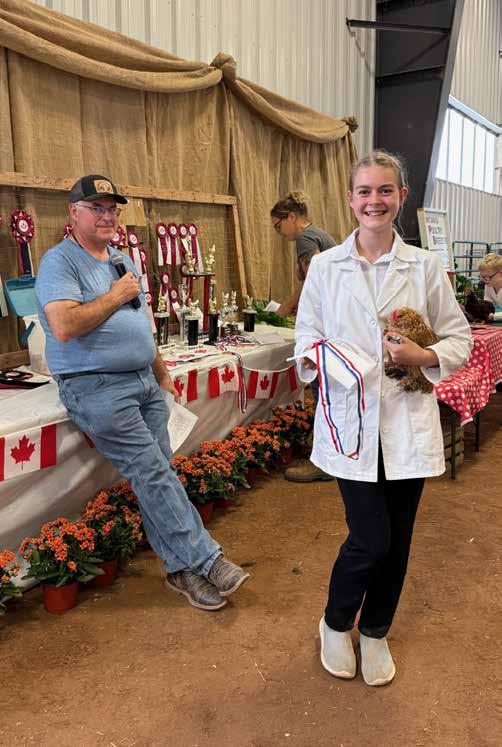

show, four very keen members participated in the showmanship competition. It was held on home turf, at the West Niagara Agricultural Society grounds.
Before ever stepping a four-toed foot (and sometimes five-toed) into the show ring, members first had to make sure all the birds were clean and fluffed and handled carefully. The birds and the competitors had to be ready to make a public appearance.
Once again dressed in their show clothes of black pants and white lab coats they were ready to answer all the judge’s questions regarding breeds, body parts and general appearance of the bird. Competitors were competent in holding and carrying the bird, putting the bird in the cage, taking the bird out of the cage, examining and posing the bird.
Poise and speaking ability with confidence and clarity assisted the judge in choosing winners.
“All members performed extremely well,” said leader Jessie Rooker, “demonstrating their knowledge, handling abilities and patience, waiting and watching as almost 20 other youth showmen participated.”
“Kristen and I would like to congratulate Carson in placing
third in his age class and Haven Stec for placing second in her age class. We were extremely proud of all our 4-H members.”
Stec, a 12-year-old member from Jordan, joined the new poultry club.
“It was a lot of fun and I learned so much, including how to treat your poultry if they get sick, how to wash them, and of course how to properly show a bird. At our meetings, our group made crafts, baked with eggs, and practiced showing our birds,” Stec said.
“My two leaders, Jess and Kristen, were super nice and very helpful. They gave me guidance on poultry breeds and I found a great one to show. I was able to show at multiple places including the West Niagara Fair, the Wainfleet Fair, and the American Poultry Association show. At these shows I ended up taking home a first and two seconds in showmanship. I am so excited to be involved in 4-H Poultry Club again next year!”
“This show had over 2,400 birds entered in poultry conformation classes from all over Canada and the U.S.A. Even we, the poultry club leaders, had birds on exhibit. We would like to thank the OPB for hosting and organizing such a wonderful show,” said Rooker.

Date/Time: Saturday, November 29, starting at 5 PM
Route: Departing from the West Lincoln Community Centre, traveling east on West Street, south on Regional Road 20 and concluding on the corner of St. Catharines Street and Industrial Park Road.



Road Closures: 3:30 to 8 PM westlincoln ca/parade @TWPWestLincoln

By Ann Marie Chechalk
The first thing one hopes to hear at any plowing match is “nice weather,” and that is the way it has been for many years when the North Niagara Plowing match takes place on the Tuesday after Thanksgiving. The next question is always, “how is the land?”
Evan Scott was there and the first thing he said was: “Nice weather and the grounds are turning over really well.”
Scott was there as a 4-H leader, with six members who were plowing, but this was not his first plowing match or second, just one of many, as a member of a farming and plowing family. His dad is a plowing coach, his grandpa Hank has taught many to plow with amazing patience. His aunts also plowed and were Queens of the Furrow in the past and continue to help with the paperwork and prizes.
Emily Kelly, of Caistor Centre, has been plowing for three years. When she heard 4-H had a plowing club, she said to herself, “I have never plowed before, why not try it?” Emily placed third with a score of 102.
Taylor Smith plowed with her “amazing” brother James and her
trusty equipment, a John Deere 11-20 plow, 2-furrow.
“It’s not too wet,” Smith said, “pretty decent ground, not terrible.” Smith scored 102 and placed fourth on this day
James, “the Amazing,” had recently plowed at the 2025 International Plowing Match held in Grassie. He qualified at last year’s North Niagara Plowing match with a score of 120 in the two-furrow, 15 and under class. Placing second out of a group of eight from all over Ontario he was presented with the Fred and Helen Davenport watch and a cash gift of $200, and has now qualified for next year’s match in Bruce County.
Coming in second with a score of 110 at the NN plowing match with his two-furrow Kverneland plow, Smith must bow to the plowing expertise of Carly Packham’s score of 118.
Packham has been plowing since she was 12 years old.
“My dad and I restored a John Deere 2130 and a Kverneland two-furrow plow,” she said.
“This is something we like doing together. We have a collection of tractors and we enjoy plowing and tractor pulling.”

Taylor Smith plowed with her “amazing” brother James and her trusty equipment, a John Deere 11-20 plow, 2-furrow. “It’s not too wet,” Smith said, “pretty decent ground, not terrible.” She scored 102 and placed fourth at the North Niagara Plowing Match. ~ Ann Marie Chechalk photo
“I was chosen to do the opening split at the International Plowing Match as they wanted a young plowman that is going to represent our future in plowing.”
“This year at the North Niagara Plowing match the ground had a
nice amount of moisture so it made the earth turn over quite well. I was excited to come first,” she said. Perhaps in the future Carly Packham will be the Queen of the Furrow.
By Ann Marie Chechalk
The reigning Ontario Queen of the Furrow, most recently crowned at the International Plowing Match in Niagara in September, Victoria Kolb of Peel/Dufferin came for a visit to the North Niagara Plowing Match last month.
“I grew up on a dairy farm in Caledon and was part of 4-H in dairy, beef, sheep, and Go for the Gold, but I did not learn how to plow until 2024. The plowing was actually my favourite part of the Queen of the Furrow competition,” she said
Also included was an interview and a speech. Her speech was on growing up with a grandfather who taught her so much about agriculture and being part of a community and the ability to stop and talk to everyone. Kolb will now represent the Ontario Plowmen’s Association at a number events throughout the province while completing her studies at the University of Waterloo and also looking to continue on as a student and attaining her master’s degree in biostatistics.
Locally, Ayr’s Iris Perriman, a student at Brock University, is the new North Niagara Queen of the Furrow.
“I have been a part of plowing matches since I was very young,” said Perriman, “my aunt Sharon Grose was Queen of the Furrow and encouraged me to contact the local plowing club.”
There she was welcomed with open arms by the queen coordinator Sarah Keizer.

“This is our 100th anniversary and we had not had a queen for about 10 years, what a fitting occasion to meet and crown Iris,” said Keizer.
A political science student at Brock with aspirations to attend law school and be involved as an international trade lawyer. Perriman joked that she has always been quite talkative and good at arguing about everything, a trait, she says, that should serve her well in the future.
“Uncle Norm taught me to plow and although I have not done it in a few years I was able to practice at the lands of the Smith family over reading week. I have become part of the community and look forward to new opportunities and to grow as a person. I also like the tiara and sash,” she said, laughing.
The crowd is pleased and comments are heard, “it is important for young people to be part of agriculture.”











The Township of West Lincoln has initiated the development of a Road Safety Study and Action Plan The Study aims to guide long-ter m mobility safety policy and investment decisions to ultimately reduce traffic-related injur ies and fatalities across both urban and rural areas of West Lincoln while suppor ting Township’s broader strategic infrastr ucture goals and road networ k pr ior ities
Get involved!
A Public Infor mation Centre (PIC) is being held to introduce the Road Safety Study and Action Plan and provide an over view of the Study background, timeline, and wor k completed to date
When: Thursday, November 27, from 5 to 7 p m

Where: West Lincoln Community Centre, Librar y Program Room, 177 West Street, Smithville
Format: Drop-in open house style (no registration required)
The pur pose of PIC #1 is to present initial findings on existing road safety conditions in West Lincoln, along with a summar y of relevant policies, and next steps in the study process
The Project Team is seeking to receive public including stakeholder input on road safety concer ns on roads under the jur isdiction of West Lincoln to help guide future recommendations and road safety implementation process
All interested par ties are invited to attend the PIC and provide comments on the infor mation shared Members of the Project Team will be available to answer questions and receive comments
For fur ther infor mation about this Study, including ongoing updates, please visit the study webpage at www westlincoln ca/road-safety





By Niagara Farms Staff
Seven young people, including a few from the Hamilton and Ancaster area, were recognized last month for their ability to combine their artistic skills with their love of horses.
The Bill Galvin Racing Alliance held a special awards night in October at Woodbine Mohawk Park, where they unveiled the winners of this year’s derby. The alliance, which seeks to promote harness racing in the province, holds a contest each year where school children can enter artwork or written pieces that somehow connect to the sport.
“It was wonderful to meet the talented, creative minds behind the literary and art entrant finalists. They were an enthusiastic group, eager to take part in every experience - it truly made for a special afternoon and evening,” said Karen Hauver, founding director of the BGRA.
There were 20 finalists, the top three in each group, invited to the awards night, spanning seven categories between the art and the literary entries. In addition to the awards presentation the finalists also received the VIP treatment, touring the paddocks, getting a harnessing demonstration, taking rides in double-seated jog carts and using the virtual reality harness driving set.
Driver Jody Jamieson joined the finalists at the VR “Drive to Win” station to share tips and encouragement, while trainer-driver Natasha Day met with finalists in the winner’s circle to talk with them as they prepared for their jog cart rides.
St. Catharines businessman Tom Rankin, an owner-breeder and avid supporter of harness racing, once again sponsored the contests.
Here are the winners:
Youth Literacy Derby - Junior (Grades 3 to 5) short story winner was Guelph’s Larissa Thompson for her story Thunder’s First Race; Intermediate (Grades 6 to 8) short story winner was Rodney’s Hailey Jeffery for A Little Girl’s Hope; Junior poem winner was Ayton’s Olivia Schiedel for The Great Race; and Intermediate poem winner was Sophia Zheng of Richmond Hill with Heart of a Horse.
Youth Art Derby - Junior division went to Hamilton’s Queenie Tan for Dreams in Full Speed; Intermediate went to Ancaster’s Alyssa Yu for The Spirit of Bill Galvin; and Senior (Grades 9 to 12) went to Hamilton’s Kailing Bao for Racing Freedom.
Winners’ entries can be viewed online at bgracingalliance.ca.
Finalists over 12 years of age also received certificates for Equine Guelph’s online Youth Horse Behaviour and Safety courses, while all winners received a complimentary junior membership from Standardbred Canada.
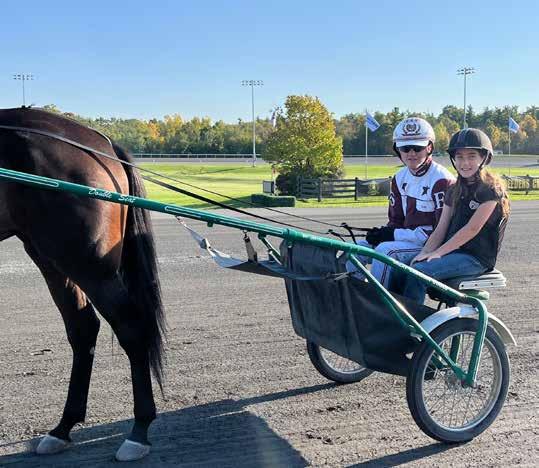


By Luke Edwards
Researchers and those involved with the new research farm being built by Brock University will start collecting data and learning some valuable things even before the first vine is planted or the first greenhouse panel goes up.
The farm, being built on a plot of land just down Merrittville Highway from the main campus, will become the hub for some of the most important work Brock researchers are conducting for Canadian farmers and grape growers. But even as they get the preliminary work done for construction to begin in earnest, likely next year, Jim Willwerth said they’ll be able to learn a bit about how things like drainage installation affects the local ecosystem.
“By having this as a Brock farm it opens the door for a lot of opportunities for longer term studies and so our team’s really excited about this aspect of the project,” said Willwerth, an associate professor of biological sciences and researcher at Brock’s Cool Climate Oenology and Viticulture Institute.
Once complete, research at the farm will fall into three main themes. The first is the clean plant program, which will provide a place to introduce, test and
maintain grape varieties that are clean of disease.
Sudarsana Poojari, principal scientist at CCOVI, explained the process for the clean plant program. First, they take a small sample of a vine and test it for viruses. Using high throughput sequencing technology, researchers are able, in a mere 40 minutes, to determine if there are any viruses in the vine.
“We just do one test and it tests for all of them (viruses),” Poorjari said.
If there is a virus detected, researchers will then have to take a tiny cutting from the newest growth where the virus is unlikely to have entered, and test again.
Once they have a clean sample, they have a new addition to the repository, which offers more security for Canadian growers, who often must bring in plant material from the United States or France, Poorjari said.
The only other similar site in Canada is the Centre for Plant Health, run by the Canadian Food Inspection Agency, in Saanich, B.C.
With clean samples, researchers can then start growing the plants. And that’s where the new research farm will really start to shine. Once complete it will have

a screenhouse, a greenhouse and a foundation block, each section bringing the plants one step closer to real world, Niagara conditions.
“As an industry there should be one place where the source is coming,” Poorjari said. The Brock farm will offer that space, while providing the long term vision and continuity needed.
And with the new vineyard space, the Brock farm team will be able to test different varieties, rootstocks and other variables.
“So we have the very best grapevine material adapted to Canadian vineyards,” Willwerth said.
Some of that research can be done in existing vineyards, but there are two major downsides to that, Willwerth explained. First, it depends on the willingness of the grower to offer up the space. Asking a businessperson to sacrifice that space for a long period of time can be a challenge. Additionally, researchers can only control so many variables in those conditions.
With the new farm and dedicated space, Willwerth said they can take a long-term view while also getting creative.
“We can control everything that we’re doing, we can take risks that a grower can’t take when it comes to evaluating rootstocks and new material,” he said.
“If it doesn’t do well we can just rip it out and start over.”
The other two major themes of the research farm are precision ag and ecological interactions, and urban applications. For precision ag, Willwerth said they’ll be looking at mechanization opportunities, as well as sensor technology, “to be able to determine stress in vines or an early detection type system to deal with problems in the vineyard really before they arise.”
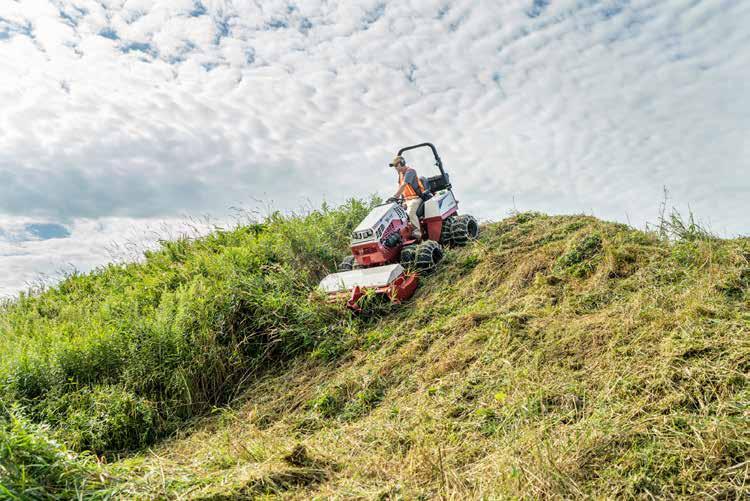
Research into ecological interactions will consider how vineyard production affects the rest of the nearby ecosystem, both within the vineyards and beyond. Willwerth said they’ll look at things like prey vs predator interactions, the
insects and microbes in the soil, as well as cover crops.
“To help improve the biodiversity and overall the vineyard health and the health of our region,” he said, adding soil health, biodiversity and sustainability have become major things farmers and grape growers think about these days.
“These are all things the industry does want,” he said. “Farmers are much more aware of their soils and the health of their soils.”
Finally, with urban and rural areas in Niagara backing up against each other, the final research theme - urban applications - will be likewise important here and throughout Canada.
Ultimately, their research is aimed at helping farmers, so Willwerth said the industry will always be top of mind.
“Our real goal is to have really strong relationships with our community as well as our agricultural sector,” he said.
Farm to be named after Norris Walker
If the Brock Farm project sounds expensive, that’s because it is.
Fortunately, a mixture of government grants, university commitments and community generosity will make it a reality.
Most recently, a $7 million legacy gift from Norris Walker will go a long way in bolstering the project.
“It’s just going to allow us to really achieve our vision at Brock,” Willwerth said, adding it’s not just the financial support but the general community support that is going to allow them to do everything they want to do at the farm.
With the legacy gift, Brock officials have announced the campus will be named the Norris W. Walker Research Farm.
“We are extremely grateful to Norris for his unwavering support for Brock that will continue to have a positive impact on our students and campus community for generations to come,” said Brock president and vice chancellor Lesley Rigg



Canadian newspapers are powered by journalists, not AI. They check the facts so you can trust what you’re reading. nationalnewspaperweek.ca

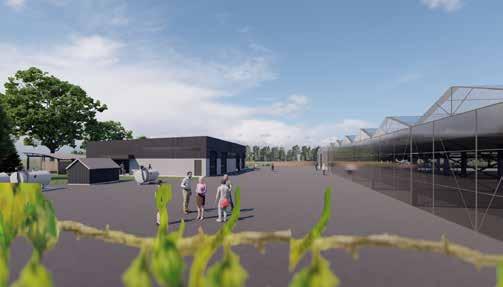
One of the offshoots of Norfolk’s initial efforts occurred after Prince Edward Island environment George Webster attended the pilot launch in
Officially,

farmers participating
Credit was given to some of the programs largest advocates by Gilvesy. Local MPP
nent since the early days, and introduced a Private Member’s Bill promoting the concept.

moting it there. Bob Sopuck, who was Delta Waterfowl’s western vice-president of policy was an early advocate and became elected as an MP and was the program’s champion on Parliament Hill. Dave Reid co-wrote the

sands of people about ALUS at hundreds of speaking engagements across Canada. Recognition for the program has included a gram and farmers fell they are the program
“People feel they are partners in ALUS,” roots program that recognizes the value of community.”




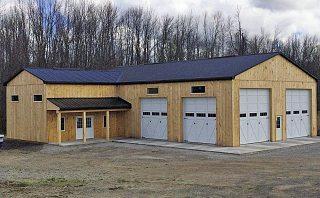


Root Vegetable and Cabbage Soup
Ingredients
• 1 Ontario onion, chopped
• 2 Ontario carrots, diced
• 2 Ontario beets, peeled and diced
• 2 cloves Ontario garlic, minced
• 5 cups (1.25 L) vegetable or chicken broth
• 8 medium Ontario parsnips, diced
• 3 cups (750 mL) chopped Ontario green cabbage
• 1/2 tsp (2 mL) dried marjoram or oregano leaves
• 1/2 tsp (2 mL) dried thyme leaves
• Salt and pepper
• 2 tbsp (25 mL) chopped fresh parsley
Instructions
In large saucepan, combine onion, carrots, beets, garlic and broth. Cover and bring to a boil; reduce heat and simmer, covered, 10 minutes.
Add parsnips, cabbage, marjoram and thyme; simmer, covered, for about 15 minutes, until vegetables are tender. Season to taste with salt and pepper. Serve sprinkled with parsley.

Ingredients
• 3 cups (750 mL) Ontario carrot, shredded
• 1-1/2 cups (375 mL) Ontario potato, peeled and shredded
• 1/3 cup (75 mL) Ontario onion, finely chopped
• 4 eggs, lightly beaten
• 1/3 cup (75 mL) all-purpose flour
• 2 tbsp (25 mL) chopped fresh parsley
• 1 tbsp (15 mL) chopped fresh dill
• 1/2 tsp (2 mL) salt
• Pepper Dill Yogurt Sauce:
• 1 cup (250 mL) plain regular or low-fat yogurt
• 1/4 cup (50 mL) regular or light mayonnaise
• 1 tsp (5 mL) chopped fresh dill
• 1 tsp (5 mL) lemon juice
Instructions
In large bowl, combine carrot, potato, onion and beaten eggs until well combined. Stir in flour, parsley, dill, salt and pepper to taste.
Heat 1 tbsp (15 mL) vegetable oil in large nonstick skillet over medium-high heat. Spoon about 2 tbsp (25 mL) carrot mixture into pan; flatten slightly. Fry on both sides until golden brown; drain on paper towel. Keep warm in oven while preparing remainder, adding more oil as needed. Serve with Dill Yogurt Sauce.
Dill yogurt sauce: In small bowl, stir together yogurt, mayonnaise, dill and lemon juice; cover and refrigerate until serving.


Beet and Carrot Tarte Tatin Ingredients
• 2 Ontario beets
• 2 cups (500 mL) 1/2-inch (1 cm) rounds Ontario carrots, (about 2)
• 2 tsp (10 mL) vegetable oil
• 1/3 cup (75 mL) granulated sugar
• 2 tbsp (25 mL) water
• 1 tbsp (15 mL) vinegar
• 1/2 cup (125 mL) grated Parmesan cheese
• 1 tbsp (15 mL) chopped fresh Ontario rosemary Leaves
• Half pkg (400 g) refrigerated pie crust
• 1 tbsp (15 mL) chopped fresh Ontario parsley
Instructions
Trim both ends of beets; wrap in foil and place on rimmed baking sheet. Place carrots on same baking sheet; toss with oil. Roast in 400°F (200°C) oven for 25 to 30 minutes or until carrots are tender. Remove carrots and set aside. Continue roasting beets for 15 to 30 minutes or until tender when pierced with sharp knife. Unwrap and let beets cool slightly; slip off skins. Cut into 1/2-inch (1 cm) rounds.
Meanwhile, in small saucepan, stir together sugar and water. Cook over medium-high heat, swirling pan occasionally, until mixture is amber-coloured, 4 to 6 minutes. Remove from heat; add vinegar. Quickly pour caramel into 9-inch (23 cm) glass pie plate; tilt and rotate pan to evenly coat bottom with caramel.
Arrange beets and carrots in single layer on top of caramel. Sprinkle with cheese and rosemary.
Place pie crust over vegetables, tucking edges into pan. Prick dough all over with fork. Bake in 400°F (200°C) oven for 20 minutes; reduce heat to 350°F (180°C) and bake until crust is golden brown, 15 minutes. Let cool 10 minutes before inverting carefully onto large rimmed plate. Sprinkle with parsley.

Ingredients
• 2 cups (500 mL) peeled, sliced Ontario carrots
• 2 cups (500 mL) peeled, sliced Ontario parsnips
• 2 tbsp (25 mL) water
• 1/4 cup (50 mL) Ontario maple syrup
• 2 tbsp (25 mL) butter
• 2 tbsp (25 mL) chopped candied ginger
• 2 tbsp (25 mL) chopped fresh Ontario parsley
Instructions
Combine carrots with parsnips and water. Microwave, covered on High power for 10 minutes, stirring halfway through; drain. Stir in maple syrup and butter and chopped candied ginger until richly glazed. Sprinkle with chopped parsley.
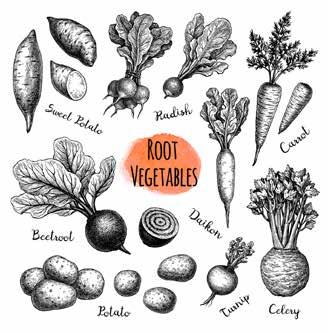

Ingredients
• 3 Ontario beets (about 1 lb/500 g)
• 2 cups (500 mL) all-purpose flour
• 1/2 cup (125 mL) unsweetened Dutch-process cocoa powder
• 1-1/2 tsp (7 mL) baking soda
• 1/2 tsp (2 mL) salt
• 3 Ontario eggs
• 1/4 cup (50 mL) vegetable oil
• 1-1/2 cups (375 mL) packed brown sugar
• 1 tsp (5 mL) vanilla
• 3/4 cup (175 mL) hot water
Icing:
• 1 cup (250 mL) 35% Ontario whipping cream
• 1 tbsp (15 mL) granulated sugar
• 1 tbsp (15 mL) unsweetened Dutch-process cocoa powder
Instructions
Trim both ends of beets. Wrap beets with foil and place on baking sheet. Bake in 400°F (200°C) oven for 45 to 60 minutes or until tender when pierced with sharp knife. Unwrap and let beets cool slightly; slip off skins. Roughly chop and place in food processor and process until smooth. Measure out 1-1/2 cups (375 mL) beet purée.
Reduce oven to 350°F (180°C). Spray 9-inch (23 cm) round baking pan with cooking spray and line with circle of parchment paper.
In medium bowl, whisk together flour, cocoa, baking soda and salt; set aside.
In large bowl, whisk together eggs, oil, brown sugar, vanilla and beet purée. Add flour mixture to beet mixture alternately with hot water, beginning and ending with flour mixture, stirring until smooth.
Pour batter into prepared pan and bake 45 to 50 minutes or until a toothpick inserted in centre comes out clean. Let cool in pan on wire rack for 15 minutes. Turn cake out and let cool completely.
Icing: In large chilled bowl, using electric mixer on high, whip cream, sugar and cocoa, until firm peaks form. Pipe rosettes or frost top of cake and dust with cocoa; if desired.
Tips: Omit cocoa from whipping cream and add 1 tsp (5 mL) vanilla for vanilla whipped cream.
If you have any extra beet purée freeze for another use.

Ingredients
• 4 cups (1 L) Ontario milk (1 or 2%)
• 2 cups (500 mL) shredded peeled Ontario carrots (4 or 5)
• 2 tbsp (25 mL) long-grain rice (Basmati), rinsed
• 1/2 cup (125 mL) granulated sugar
• 1 tsp (5 mL) butter
• 1/4 tsp (1 mL) ground cardamom
• 2 tbsp (25 mL) shelled natural pistachio nuts, coarsely chopped or slivered blanched almonds
Instructions
In medium-size heavy saucepan, bring milk, carrots and rice to boil over high heat. Reduce heat and simmer, uncovered and stirring often, until thickened and milk has reduced by half, about 45 minutes.
Stir in sugar and butter; cook until pudding consistency, about 15 minutes. Remove from heat stir in cardamom. Serve warm (not hot) or chilled, garnished with pistachios..


There may be less sunlight in the day now than a few months ago, but that doesn’t mean you should just sit around and do nothing.
November marks a bit of a transition month from fall into winter. As such, there’s a wide variety of things to do, including one of the first arrivals in the region of old Kris Kringle. Here are a few things that can keep you busy in the coming weeks.

NOVEMBER 7 TO 13
NOVEMBER 15

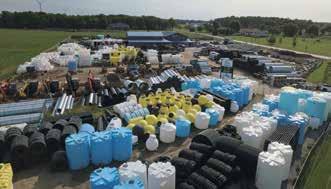
While not taking place in Niagara, an annual November tradition returns to Toronto this year, as the Royal Agricultural Winter Fair runs from Friday, Nov. 7 to Thursday, Nov. 13. The pinnacle for bakers, animal showers and the like, the fair features a week of competition, entertainment and fun.
It takes place at Exhibition Place in Toronto. For details and tickets visit royalfair.org.

Use your noggin’ to help feed the horses when a trivia night in support of the Last Chance Horse and Pony Rescue comes to Ridgeway this month. It takes place Saturday, Nov. 15 at the Ridgeway Legion, 228 South Mill St. Doors open at 7 p.m., with trivia beginning at 7:30. Registration is $25 per person, or $175 for teams of eight. Top three teams receive prizes. To register or get more information contact Sue at 289-321-9380 or semard777@gmail.com, or Jennifer at 289-501-7326.

A national organization that supports women in agriculture will be hosting a major conference in Niagara Falls later this month. The Advancing Women Conference will feature two and a half days of events, speakers, exhibitors and networking opportunities for women involved in agriculture in any shape or form. It runs from Sunday, Nov. 23 to Tuesday, Nov. 25 at the Sheraton Fallsview. For more information on the agenda or registration, visit advancingwomenconference.ca

Wainfleet is ready once again to go back to Christmas past with the annual holiday event at Marshville Village. Explore the heritage village as it’s decorated with a pioneer Christmas theme. Live demonstrations will be joined by Christmas goodies and old time holiday music on Sunday, Nov. 30. For more information visit marshvilleheritagesociety.org






































































